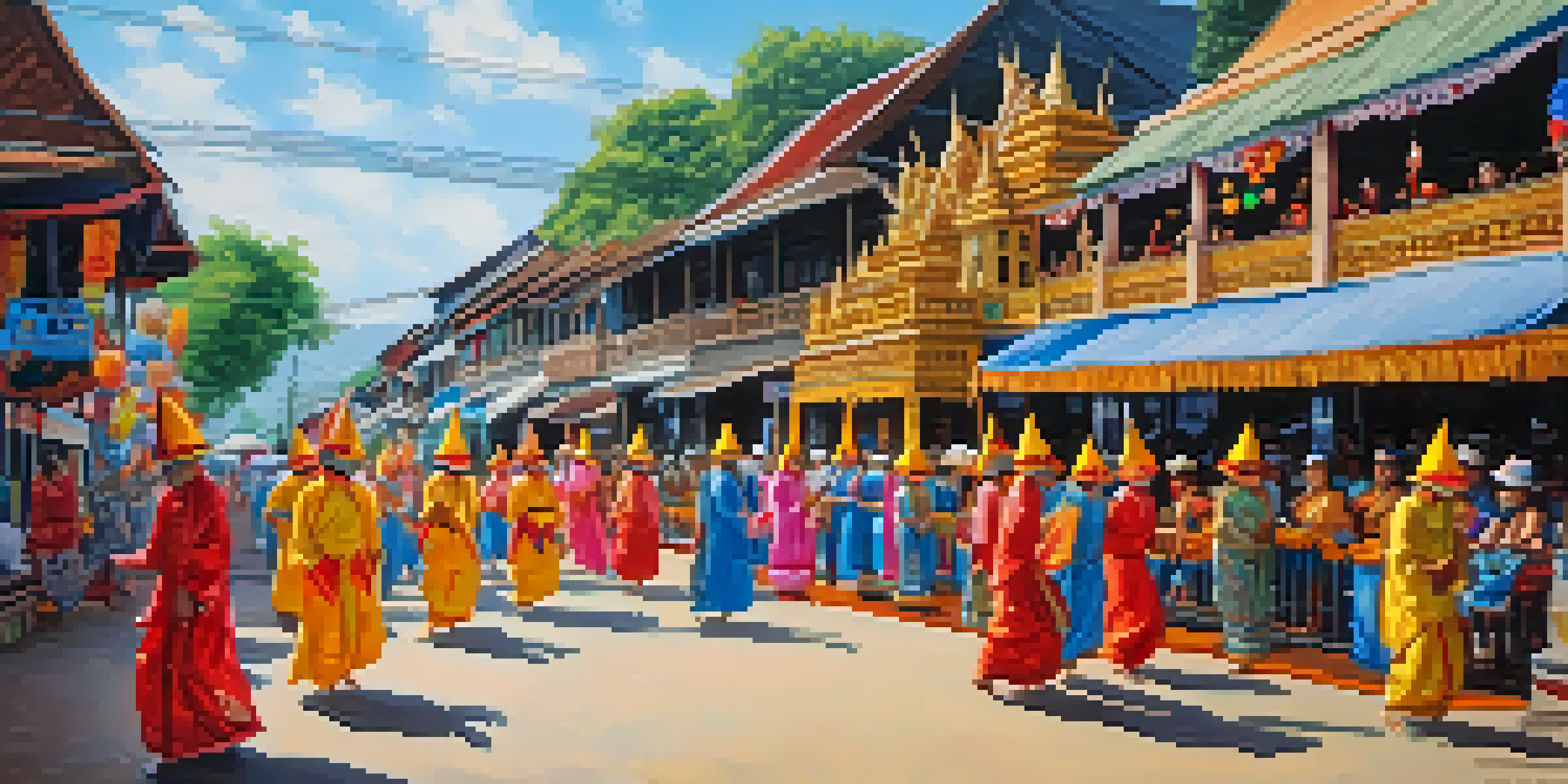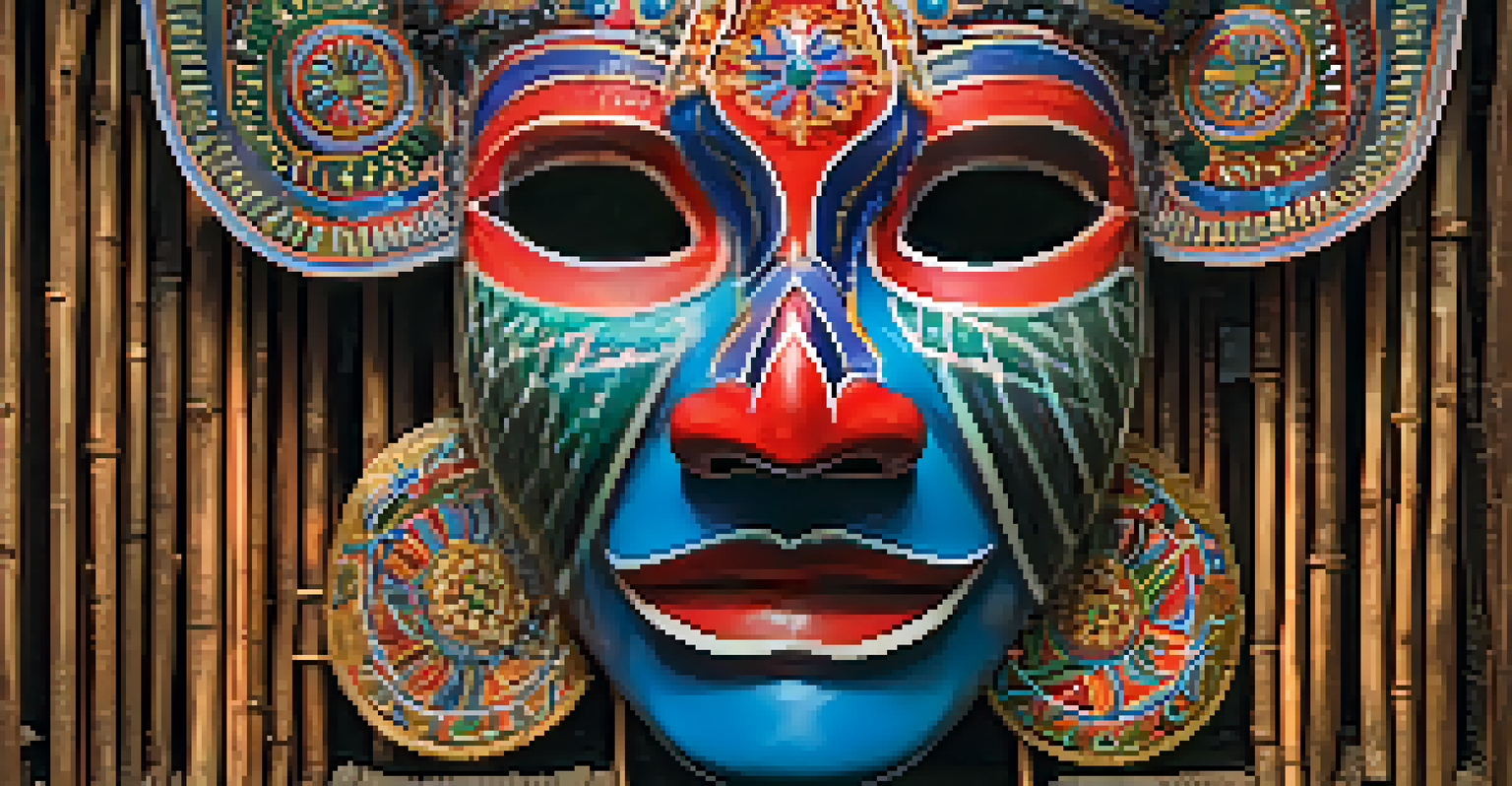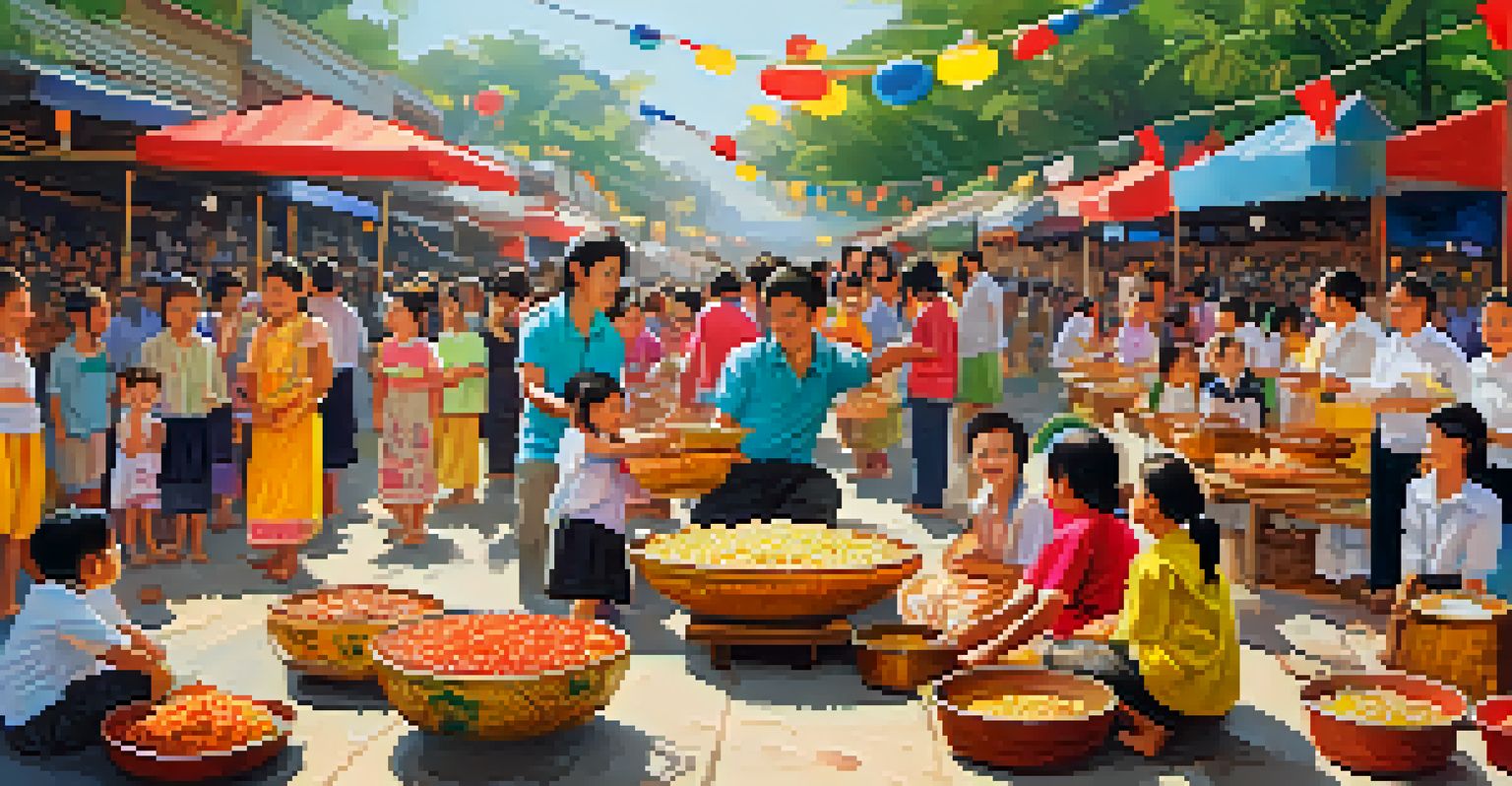Exploring the Rich Heritage of the Phi Ta Khon Festival

What is the Phi Ta Khon Festival?
The Phi Ta Khon Festival, also known as the Ghost Festival, is a unique celebration held annually in the northeastern province of Loei, Thailand. This colorful event combines elements of traditional Buddhist beliefs with local folklore, creating a vibrant spectacle that draws visitors from around the world. The festival typically occurs over a weekend in June or July, coinciding with the Buddhist holiday of Visakha Bucha.
Festivals are a way to keep our traditions alive, a reminder of who we are and where we come from.
At its core, Phi Ta Khon involves a lively procession where locals don intricate ghost masks made from wood, with colorful fabrics and decorations. These masks are not just whimsical; they symbolize the spirits of the deceased who are believed to return to visit the living during this time. The festival's atmosphere is filled with music, dancing, and merriment, making it a truly unforgettable experience.
The origins of Phi Ta Khon are steeped in local legend, with stories that vary from village to village. However, the main theme remains consistent: it celebrates the cycle of life, death, and rebirth, reminding participants of the importance of honoring their ancestors while embracing joy and community spirit.
The Cultural Significance of Phi Ta Khon
Phi Ta Khon is not merely a festival; it serves as a vital cultural touchstone for the people of Loei. It showcases the region's rich traditions, weaving together threads of history, spirituality, and community bonding. The festival allows locals to express their identity and heritage, fostering a sense of pride among participants and spectators alike.

During the festival, traditional rituals are performed, including the chanting of prayers and offerings to spirits. These practices highlight the deep-rooted beliefs in animism and Buddhism that coexist in Thai culture. This blend of religion and folklore captivates onlookers, providing a fascinating glimpse into the local way of life.
Celebration of Life and Heritage
The Phi Ta Khon Festival uniquely blends Buddhist beliefs with local folklore, celebrating life, death, and community spirit.
Moreover, the festival plays a crucial role in preserving traditional crafts. Many artisans create the masks and costumes worn during the celebration, passing down their skills through generations. This not only keeps the art form alive but also strengthens community ties as families work together to prepare for the festivities.
The Vibrant Colors and Symbols of Phi Ta Khon
One of the most striking features of the Phi Ta Khon Festival is its vibrant colors and intricate designs. The masks, often adorned with bright paints and elaborate decorations, reflect the diverse cultural influences that have shaped the region over the centuries. Each mask tells a story, representing various spirits or characters from local folklore.
Culture is the widening of the mind and of the spirit.
The colors used in the costumes and masks are not arbitrary; they carry deep meanings. For instance, red may symbolize bravery, while yellow represents happiness and prosperity. This thoughtful use of color adds an additional layer of depth to the festival, as participants and observers alike engage with the symbolism behind the visuals.
In addition to the masks, the festival features various performances, including traditional dances and music. These elements further enrich the experience, creating a lively atmosphere that captivates everyone involved. The combination of color, music, and movement brings the festival to life, making it a feast for the senses.
The Rituals and Activities of the Festival
The Phi Ta Khon Festival is packed with a variety of rituals and activities that engage both participants and spectators. The highlight is undoubtedly the grand procession, where masked participants parade through the streets, showcasing their creativity and spirit. This lively event encourages audience participation, creating a sense of unity among attendees.
Aside from the procession, visitors can also enjoy traditional games and contests that reflect local customs. These activities often involve teamwork and friendly competition, allowing participants to bond and share laughter. Such interactions play a significant role in fostering community spirit and connection.
Vibrant Colors and Cultural Symbols
The festival features intricate masks and costumes that reflect deep cultural meanings, enhancing the overall experience with their vibrant colors.
Another key aspect of the festival is the food. Vendors set up stalls offering a range of delicious local dishes, allowing festival-goers to savor the flavors of the region. This culinary experience not only enhances the festivities but also serves as a reminder of the importance of sharing meals in Thai culture.
The Role of Music and Dance in Phi Ta Khon
Music and dance are integral components of the Phi Ta Khon Festival, creating an electrifying atmosphere that captivates everyone present. Traditional folk music, often played on instruments unique to the region, accompanies the lively dances that occur throughout the event. This rhythmic combination invites participants to join in, encouraging everyone to let loose and have fun.
The dances performed during the festival tell stories and convey emotions, often rooted in local history and mythology. Each movement symbolizes different aspects of the cultural narrative, allowing participants to connect with their heritage on a deeper level. This storytelling aspect adds richness to the experience, engaging both performers and the audience.
In addition to traditional performances, contemporary influences have also found their way into the festival. Modern music genres and dance styles create a fusion that attracts a younger audience while still honoring traditional roots. This evolution ensures that the festival remains relevant and appealing to new generations.
Visitor Experience: What to Expect
For those considering attending the Phi Ta Khon Festival, prepare for an immersive experience filled with color, sound, and community spirit. The festival is family-friendly, making it an excellent opportunity to introduce children to cultural traditions. Expect to see a mixture of locals and international visitors, all coming together to celebrate and participate.
As you wander through the festival grounds, you'll encounter numerous stalls showcasing local crafts and delicacies. Take a moment to appreciate the craftsmanship of the masks and costumes, as well as the delicious street food that highlights the flavors of the region. Don't hesitate to engage with local artisans and ask about their work; they often love to share their stories.
Engaging Activities and Community
With lively processions, traditional games, and delicious food, the festival fosters a sense of unity and connection among attendees.
Remember to arrive early to catch the preparations and soak in the atmosphere before the festivities begin. Each moment offers a chance to connect with the culture, and the sense of community is palpable. Whether you're dancing, eating, or simply observing, Phi Ta Khon promises a memorable adventure.
Preserving the Future of Phi Ta Khon
As the Phi Ta Khon Festival continues to grow in popularity, there is a concerted effort to preserve its authenticity while welcoming new influences. Local communities are taking steps to ensure that traditional practices remain at the forefront, engaging youth in cultural activities to maintain the festival's legacy. This balance is crucial for the festival's future sustainability.
Efforts to promote cultural tourism also play a role in safeguarding the festival. By attracting visitors from around the globe, locals gain a platform to showcase their heritage while benefiting economically. This influx of interest helps to fund preservation projects and supports artisans, ensuring that traditional crafts are passed down through generations.

Ultimately, the future of the Phi Ta Khon Festival lies in the hands of its community. By fostering a love for their culture and involving younger generations, the festival can thrive while keeping its rich heritage alive. This commitment to cultural preservation will ensure that Phi Ta Khon remains a vibrant celebration for years to come.